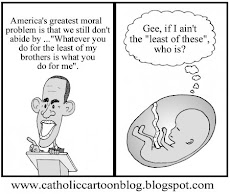"The American College of Pediatricians strongly endorses abstinence-until-marriage sex education and recommends adoption by all school systems in lieu of “comprehensive sex education". This position is based on “the public health principle of primary prevention – risk avoidance in lieu of risk reduction,” upholding the “human right to the highest attainable standard of health.”1Read the rest here.
By every measure, adolescent sexual activity is detrimental to the well-being of all involved, especially young women, and society at large. Children and adolescents from 10 to 19 years of age are more at risk for contracting a sexually transmitted infection (STI) than adults.2 This is due to the general practice of having multiple and higher risk sexual partners, and to the immaturity of the cervical tissue of girls and young women. The CDC recently stated that of the 19 million new cases of STIs annually reported in the United States, 50 percent occur in teens and young adults under 25 years of age.3 Twenty-five percent of newly diagnosed cases of HIV occur in those under 22 years of age.4 This translates into one in four sexually active female adolescents being infected with at least one STI.5
Bacterial STIs may cause life-threatening cases of pelvic inflammatory disease (PID) and infertility. Viral STIs which include herpes, the Human Papilloma Virus (HPV) and HIV are generally incurable. Herpes afflicts its victims with life-long painful recurrences, may be passed on to sexual partners even when asymptomatic, and may be life threatening to infants if passed on at birth during vaginal delivery. HPV is found among 90 percent of sexually active young adults and teens.6 While often self-limited, HPV has high-risk strains that may persist for life and cause cancer of the cervix. HIV not only causes premature demise, but also significant suffering with life-long dependence on multiple toxic and costly medications. The CDC estimates that STIs cost the U.S. health care system as much as $15.3 billion dollars annually.7
Adolescent pregnancy is similarly associated with adverse socioeconomics that have an impact on the family, community, and society at large. One in thirteen high school girls becomes pregnant each year.8 Adolescent pregnancy results in decreased educational and vocational opportunities for the mothers, an increased likelihood of the family living in poverty, and significant risk for negative long-term outcomes for the children. For example, children of adolescent mothers are more likely to be born prematurely and at a low birth weight; suffer from poor health; perform poorly in school; run away from home; be abused or neglected; and grow up without a father.9
Even if sexually active teens escape acquiring sexually transmitted infections (STIs) and becoming pregnant, few remain emotionally unscathed. Overall, one in eight teens suffers from depression,10 and suicide has risen to become the third leading cause of death for adolescents, paralleling the rise in STIs within this population.11 Infection with an STI has long been recognized as a cause for depression among teens. More recently, however, adolescent sexual activity alone has been acknowledged as an independent risk factor for developing low self-esteem, major depression, and attempting suicide.12 In studies that controlled for confounding factors, sexually active girls were found to be three times as likely to report being depressed and three times as likely to have attempted suicide when compared to sexually abstinent girls.13 Sexually active boys were more than twice as likely to suffer from depression and seven times as likely to have attempted suicide when compared to sexually abstinent boys.14 This is not mere coincidence. Scientists now know that sexual activity releases chemicals in the brain that create emotional bonds between partners. Breaking these bonds can cause depression, and make it harder to bond with someone else in the future.15
God be praised for a professional society that speaks the truth! Now will teachers, politicians and parents listen?





3 comments:
It is too good to be true - this is not the American Academy of Pediatrics (AAP), but a conservative (likely Christian) subgroup of pediatricians. A great statement, but not from the group you were hoping for.
Kim,
You are right. The American College of Pediatricians is a group of conservative pediatricians which began in 2002 because of the drift of the American Academy of Pediatricians toward an embrace of homosexuality and other aspects of the sexual revolution. It is disappointing that all pediatricians would not agree with the common sense views in the statement I referenced. But it is good to know that some pediatricians have their heads screwed on right.
And here is the link to the American College of Pediatricians
http://www.americancollegeofpediatricians.org/History-of-the-College.html
and here is the link to the American Academy of Pediatrics
http://www.aap.org/
Post a Comment